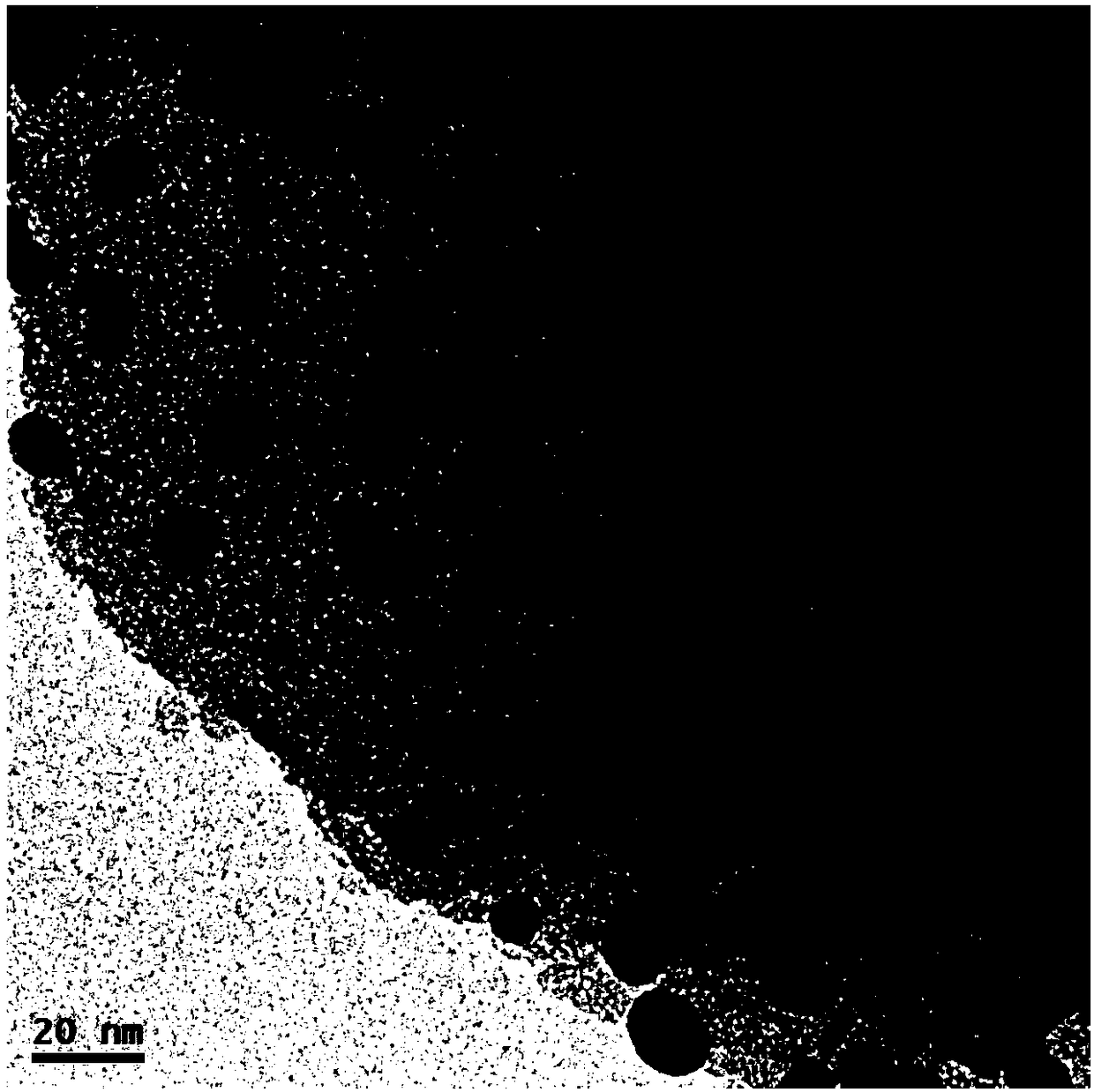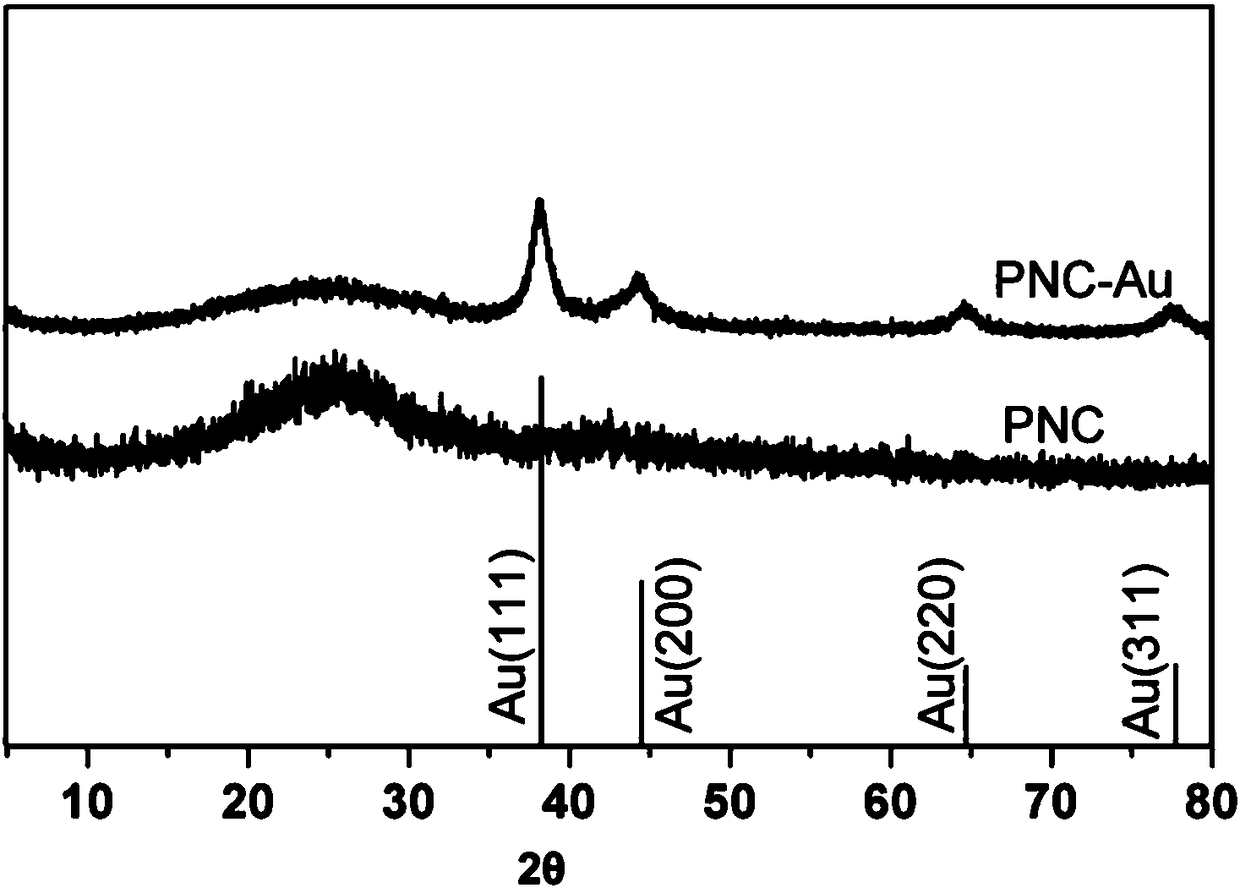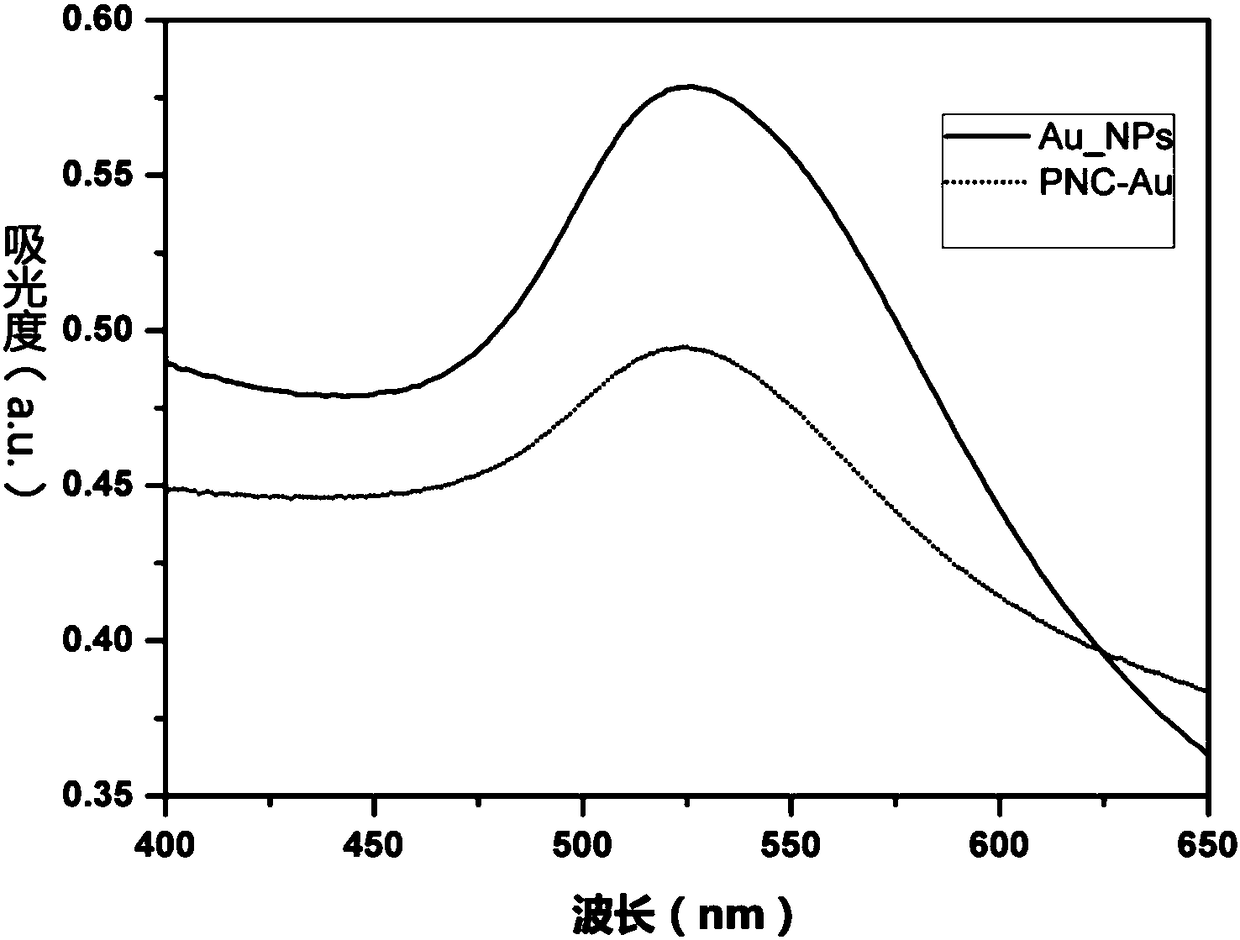Method for producing hydrogen from water through photoelectrocatalysis decomposing, used plasma catalyst and preparation method of plasma catalyst
A technology of plasma and photoelectric catalysis, applied in physical/chemical process catalysts, chemical instruments and methods, electrolysis process, etc., can solve the problems of high overpotential energy consumption and low catalyst efficiency, and achieve low overpotential and excellent catalytic performance , the effect of reducing energy consumption
- Summary
- Abstract
- Description
- Claims
- Application Information
AI Technical Summary
Problems solved by technology
Method used
Image
Examples
Embodiment 1
[0051] Embodiment 1 prepares N-doped graphene-like carbon nanomaterial (PNC)
[0052] Take 0.3g Zn(OAc) 2 2H 2 O was dissolved in 5mL of water, 1.12g of 2-methylimidazole was dissolved in 5mL of water, then the two solutions were mixed and stirred until uniform, the obtained uniform mixed solution was left at room temperature for 24h, centrifuged, and dried at 60°C to obtain ZIF -8 crystal powder. The resulting 100mg ZIF-8 was placed in a porcelain boat and put into a tube furnace, under N 2 Heating to 900° C. under atmosphere, maintaining for 3 hours, and then cooling down to room temperature naturally, to obtain a porous N-doped graphene-like carbon nanomaterial (PNC).
Embodiment 2
[0053] Embodiment 2 prepares gold nanoparticle sol
[0054] Measure out ice water to prepare 3mL 0.1M NaBH 4 solution, added to 100mL 0.25mM HAuCl 4 The solution was stirred rapidly for 5 minutes, and then aged at room temperature for 12 hours in the dark to obtain a wine-red gold nanoparticle sol.
Embodiment 3
[0055] Embodiment 3 prepares plasma catalyst PNC-Au
[0056] Get 10mg of the N-doped graphene-like carbon nanomaterial (PNC) prepared in Example 1 and disperse it in the gold nanoparticle sol prepared in 40mL of Example 2, stir and react at room temperature for 24 hours, so that the gold nanoparticles can be self-assembled and loaded by electrostatic interaction Put it on the PNC, centrifuge, and dry to obtain the plasma catalyst, which is denoted as PNC-Au. From figure 1 It can be seen from the TEM image of PNC-Au shown that the dispersion of gold nanoparticles on PNC is very uniform. figure 2 It is the X-ray powder diffraction pattern of PNC and PNC-Au, shown in the figure proves that the loaded material has the plasma characteristic absorption peak produced by gold nanoparticles. image 3 It is the ultraviolet-visible absorption spectrum of gold nanoparticles and PNC-Au, which proves that the gold nanoparticles are successfully loaded on the PNC, and the dispersion is go...
PUM
 Login to View More
Login to View More Abstract
Description
Claims
Application Information
 Login to View More
Login to View More - R&D
- Intellectual Property
- Life Sciences
- Materials
- Tech Scout
- Unparalleled Data Quality
- Higher Quality Content
- 60% Fewer Hallucinations
Browse by: Latest US Patents, China's latest patents, Technical Efficacy Thesaurus, Application Domain, Technology Topic, Popular Technical Reports.
© 2025 PatSnap. All rights reserved.Legal|Privacy policy|Modern Slavery Act Transparency Statement|Sitemap|About US| Contact US: help@patsnap.com



